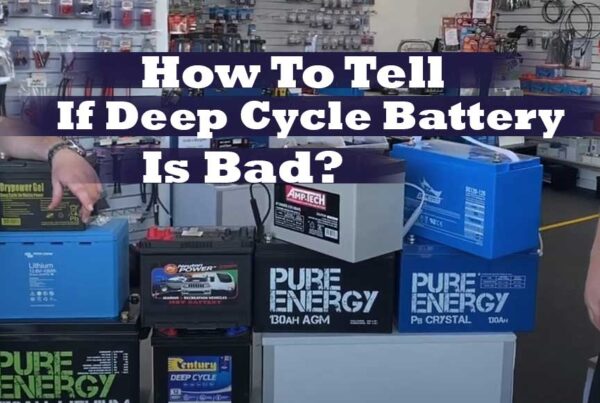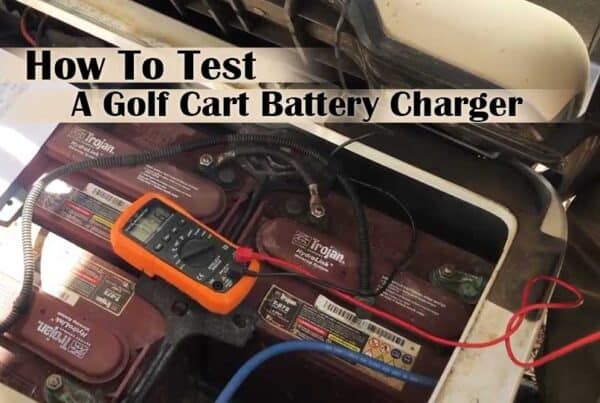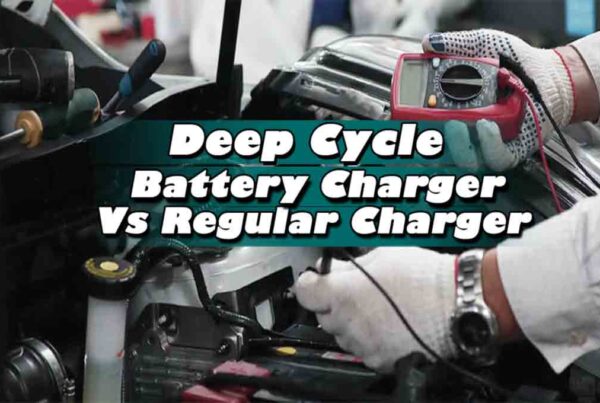Charging your marine or boat batteries is not a hard task. It is a simpler and quicker thing than you think. However, you just need to be aware of a few things. Otherwise, you may end up with damaging your batteries or reducing the ability to hold the charge for a longer period of time.
In most marine batteries nowadays use AGM or absorbent glass mat technology, which requires no or very less maintenance. It needs very little time to charge up fully than the traditional lead-acid batteries. However, these batteries damage easily also. So, you need to be aware of a few things when your boat is running by the marine batteries. So, we are here today to help you out whit hose things to remember when charging your marine batteries.
Quick Navigation
First, check your battery’s status
As the marine batteries are placed in the position that hard to reach often, it catches dirt and debris over time. So, before you start charging the batteries, it is important to check this and clean the batteries first.
Take your battery in an open place of your boat. Open the battery box and move the battery switch in the “off” point. This will ensure safety while you will be cleaning and charging it. You should also check every terminals and connection of the battery. Check if there is any corrosion or dirt on the terminal or not.
A Note: Clean your marine batteries often.
Choosing the Right Charger
After checking and cleaning the batteries, you need now a charger to charge them. But there are few factors to check before choosing the correct charger for your batteries. We are going to give you some guidelines below:
Battery Type: This is the most important thing when you are about to buy a charger for your marine batteries. Marine battery charger mostly depends on the battery type you have in your boat. There are various battery types like AGM battery, flooded battery, gel or cell battery. Each battery needs a different type of charger. If your marine battery is flooded battery type, you need standard lead-acid chargers for it. Whereas AGM batteries need smart AGM chargers or microprocessor controlled chargers. And gel or cell batteries need special gel cell battery chargers.
Battery Size: When purchasing a marine battery charger, you need to consider the size of your battery. But here telling about the battery size, we did not mean the physical size. We are meaning its capacity. Suppose you have a marine battery with 50Ah capacity. If you have the charger with 10-amp then it will take about 6 hours to charge your battery completely with that 10-amp charger. If the battery has 10Ah capacity then charging with the same charger will take 11 to 12 hours to get fully charged. So, for the marine batteries with bigger capacity, you need a charger with more power.
Charger Type: For marine batteries, there are basically two types of chargers: Automatic and Manual Chargers. The automatic charger can understand the internal current and voltage and switch off when the battery gets charged completely. And in the manual charger, the voltage and current need to be adjusted manually. And they need to be switched off manually as well.
A Note: The smart chargers are the best for deep cycle batteries and marine batteries. It is also known as “multi-stage” charger. This charger can charge the batteries by sensing its temperature and chemistry.
After choosing the right charger for your batteries let’s move on how to connect and charge the marine batteries properly.
The Connection
If your batteries are clean and there is no corrosion, you can now connect the charger to the battery. It is necessary to clean your whole batteries properly before connecting it to charging mode. If you are confused about the cleaning process, you can check How to Clean the Marine Batteries Properly.
First, place your batteries in an open or well-ventilated place. Your marine batteries should not be charged in a stagnant place. You should also let the batteries warm up to 60°F before connecting the charger with it. You should never charge frozen batteries.
Now plug your smart charger to the marine batteries. It will charge up in three phases – bulk phase, acceptance phase, and float phase. This will prevent any damage to the batteries and maximize the charge as well.
If batteries get overheated during the charging, immediately unplug the charger and contact with the manufacturer.
Charging the Batteries
Assuming that you have passed all the steps we have discussed. Now, you have the right charger for your marine batteries and already have connected the charger into the batteries. Once both of them are connected, you should now switch on the charger and the charging will begin.
But there are some important things here. First of all, take the manual both of the battery and charger and read this well. This will prevent any mistakes. And if you have the charger which has adjustable charging settings, must read the manual. This will help you to charge the batteries with the best speed.
However, your batteries begin to charge at this point. The charger is a smart charger, then you can now check the LED to see the battery’s percentage.
If you have AGM or Gel Cell Batteries, you should never overcharge it. Because by overcharging, the oxygen and the hydrogen emitted by the pressure release valves and then they will not able to recombine to form water. So the electrolytes in the battery become dried.
By using a smart charger you can prevent overcharging and the risk of damaging.
Removing the Charger
When the batteries are charged completely, switch of the charger and then remove the clips from the battery terminals. Place the battery cover on its top and place back to its original position. You are all finished now. If you have another battery on your board, just repeat this process.
Conclusion
Charging the marine battery is not that hard job. The main part is to choose the right charger for it. After buying the right charger, just follow the steps we have shown you above.





